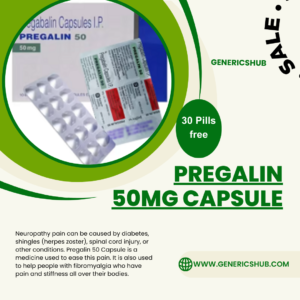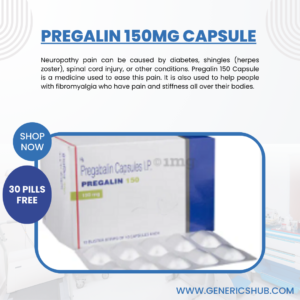Overcoming Nerve Pain: Physical Therapy Techniques for Rehabilitation
Nerve pain, also known as neuropathic pain, can be a debilitating condition that significantly impacts one’s quality of life. Understanding the underlying causes and symptoms of nerve pain is crucial in developing effective rehabilitation strategies. Physical therapy plays a vital role in managing and alleviating nerve pain, offering a holistic approach that focuses on improving mobility, function, and overall well-being. This article explores the various physical therapy techniques used in nerve pain rehabilitation, from assessment and diagnosis to targeted exercises and lifestyle modifications, to help individuals overcome the challenges posed by nerve pain and regain control of their daily activities.
1. Understanding Nerve Pain: Causes and Symptoms
1.1 Types of Nerve Pain Conditions
Nerve pain can come in many flavors, from sharp shooting pains to tingling sensations. It can be caused by various conditions like sciatica, carpal tunnel syndrome, or peripheral neuropathy. Each comes with its own unique set of challenges.
1.2 Common Symptoms of Nerve Pain
Ever felt like your nerves were sending Morse code messages of discomfort? That’s nerve pain for you. Symptoms can include burning sensations, numbness, weakness, and even a pins-and-needles feeling. It’s like your body’s way of saying, “Hey, pay attention to me!”
2. Importance of Physical Therapy in Nerve Pain Rehabilitation
2.1 Role of Physical Therapy in Managing Nerve Pain
Physical therapists are the superheroes of the rehab world when it comes to nerve pain. They use a combination of techniques to help reduce pain, improve mobility, and get you back to feeling like your old self. It’s like having a personal pain-fighting sidekick.
2.2 Benefits of Early Physical Therapy Intervention
Timing is everything, especially when it comes to nerve pain. Getting started with physical therapy early can help prevent the pain from becoming a long-term houseguest. Think of it as evicting pain before it decides to settle in for good.

3. Assessment and Diagnosis of Nerve Pain Conditions
3.1 Diagnostic Tools and Tests for Nerve Pain
It’s not just guesswork and magic wands when diagnosing nerve pain. Doctors use a variety of tools like nerve conduction studies and MRIs to pinpoint the source of your discomfort. It’s like playing detective, but with less dramatic music.
3.2 Importance of Individualized Assessments
You’re not just another number in the system when it comes to nerve pain. Individualized assessments help tailor treatment plans specifically to your needs. It’s like having a custom-made suit but for your pain relief journey.
4. Key Physical Therapy Techniques for Nerve Pain Management
4.1 Manual Therapy Approaches for Nerve Pain
Sometimes a hands-on approach is just what the doctor ordered for nerve pain. Manual therapy techniques like massage, joint mobilization, and stretching can help ease tension and improve nerve function. It’s like giving your nerves a much-needed spa day.
4.2 Modalities and Therapeutic Exercises for Pain Relief
Modalities such as heat or cold therapy and electrical stimulation can work wonders in calming angry nerves. Pairing these with targeted therapeutic exercises can help strengthen muscles, improve flexibility, and reduce pain. It’s like a dynamic duo fighting off pain villains in your body.

5. Exercise and Movement Strategies for Nerve Pain Relief
When it comes to combating nerve pain, targeted stretching and strengthening exercises can be your best pals in the journey towards relief. These exercises help to loosen up tight muscles, improve flexibility, and bolster the strength of key muscle groups supporting the affected nerves.
5.1 Targeted Stretching and Strengthening Exercises
Banishing nerve pain often involves honing in on specific stretches and exercises tailored to alleviate discomfort. By zeroing in on areas of tightness and weakness, you can address the root causes of nerve pain and work towards sustainable relief.
5.2 Neuromuscular Re-education Techniques
Neuromuscular re-education techniques play a vital role in nerve pain rehabilitation. By retraining the brain and muscles to communicate effectively, these techniques can help restore proper movement patterns, reduce pain, and improve overall function.
6. Neuromuscular Re-education and Sensory Integration in Nerve Pain Rehabilitation
In the realm of nerve pain rehabilitation, neuromuscular re-education and sensory integration are crucial components that can pave the way for enhanced recovery. These techniques focus on fine-tuning the connection between the nervous system and muscles, ultimately promoting improved movement and reduced pain.
6.1 Proprioceptive Neuromuscular Facilitation (PNF) Techniques
Proprioceptive Neuromuscular Facilitation (PNF) techniques are a game-changer in the realm of nerve pain rehabilitation. By engaging in specific patterns of movement and resistance, PNF techniques can help rewire neural pathways, enhance muscle control, and foster improved coordination.
6.2 Sensory Integration Strategies for Nerve Pain Management
Sensory integration strategies play a pivotal role in navigating the complexities of nerve pain management. By leveraging techniques that address sensory input and processing, individuals can better regulate pain signals, enhance body awareness, and optimize functional outcomes.
7. Lifestyle Modifications and Home Care for Nerve Pain Recovery
When it comes to nurturing nerve pain recovery, lifestyle modifications and home care practices can be powerful allies in the quest for relief. By making thoughtful adjustments to your daily routine and incorporating self-care strategies, you can create an environment conducive to healing and long-term well-being.
7.1 Ergonomic Adjustments and Activity Modification
Embracing ergonomic adjustments and modifying daily activities can work wonders in mitigating nerve pain. By optimizing your physical environment and altering how you engage in tasks, you can reduce strain on affected nerves and promote a more comfortable and sustainable recovery journey.
7.2 Self-care Techniques and Pain Management Strategies
Self-care techniques and pain management strategies are essential tools in the arsenal against nerve pain. From practicing mindfulness and relaxation techniques to implementing effective pain management strategies, taking a proactive approach to self-care can empower individuals to better cope with and alleviate nerve pain symptoms.In conclusion, the comprehensive approach of physical therapy in addressing nerve pain offers hope and relief to individuals seeking to improve their pain management and overall function. By integrating specialized techniques, personalized care plans, and empowering patients with self-care strategies, physical therapy serves as a valuable tool in the journey towards overcoming nerve pain and enhancing quality of life. With dedication, guidance, and perseverance, individuals can navigate their path to recovery and find strength in the rehabilitation process.


